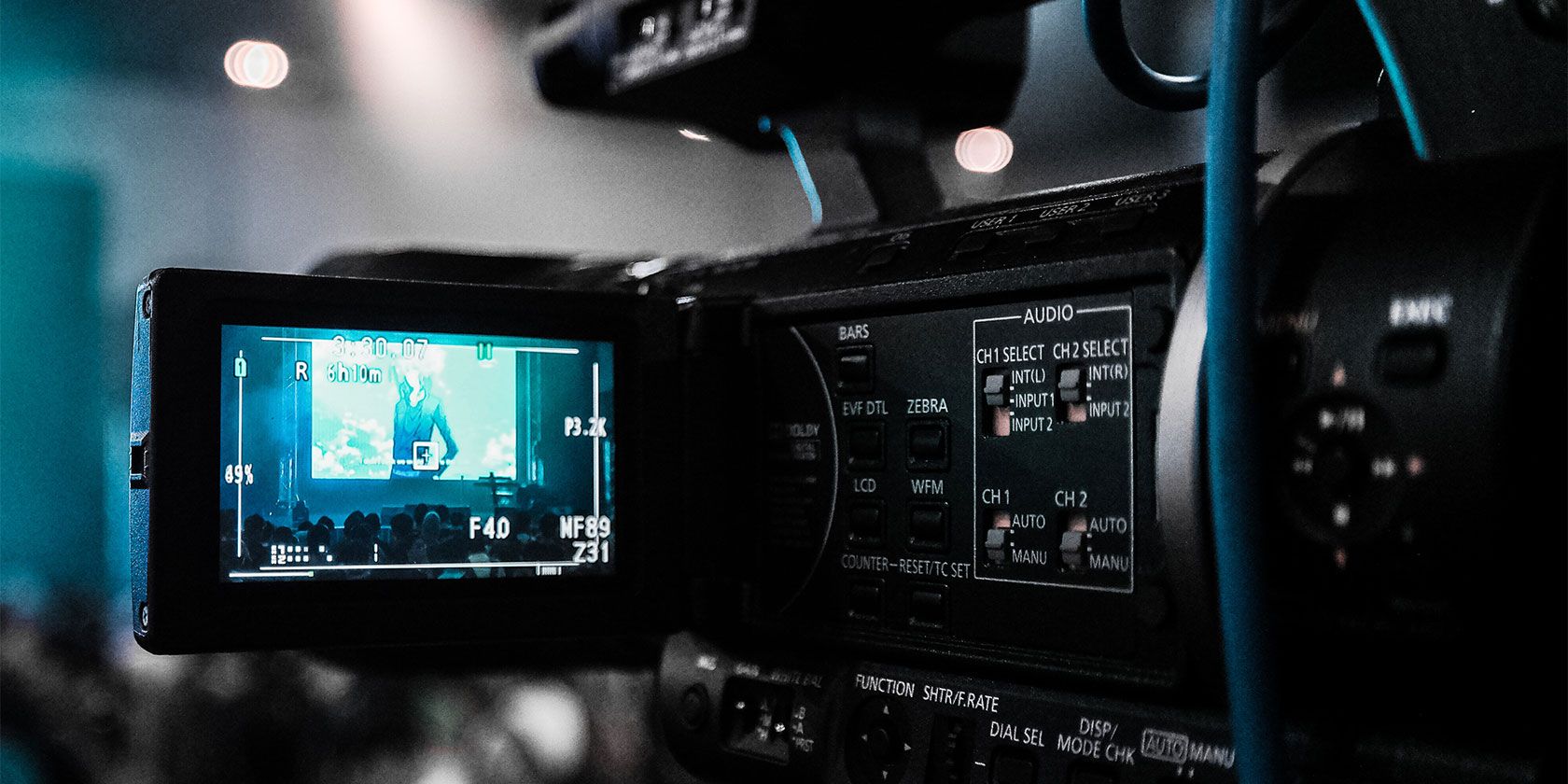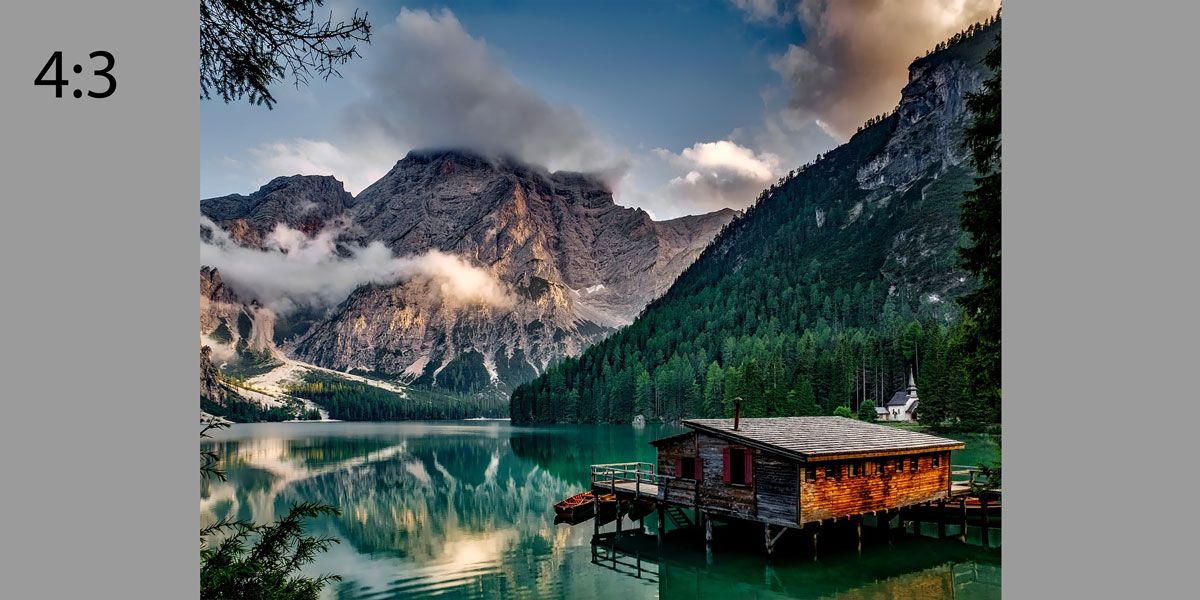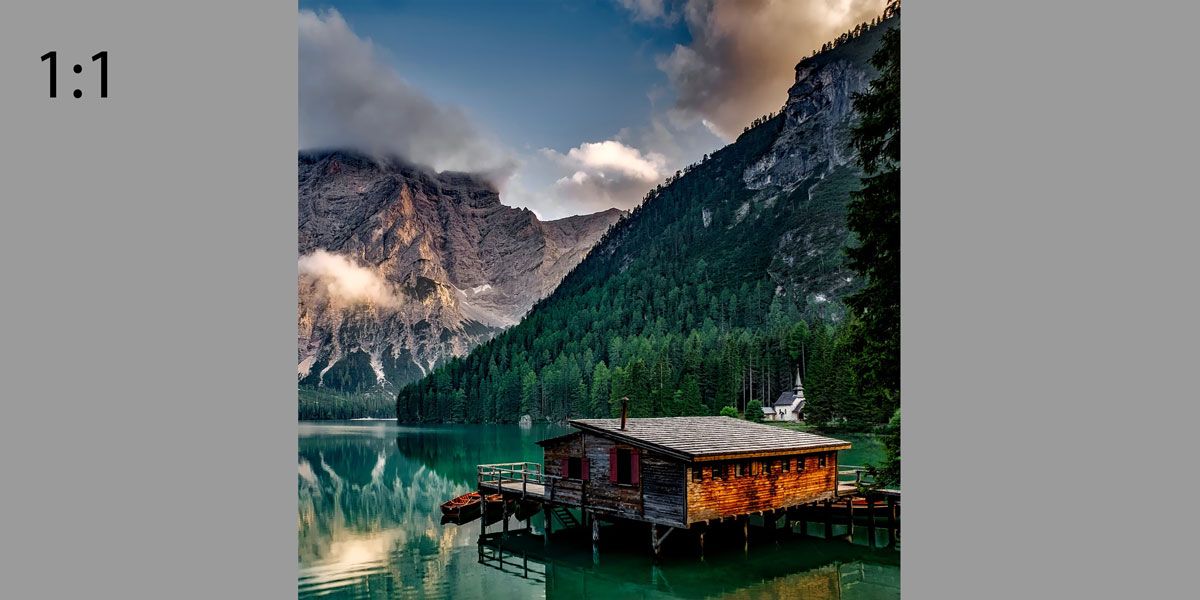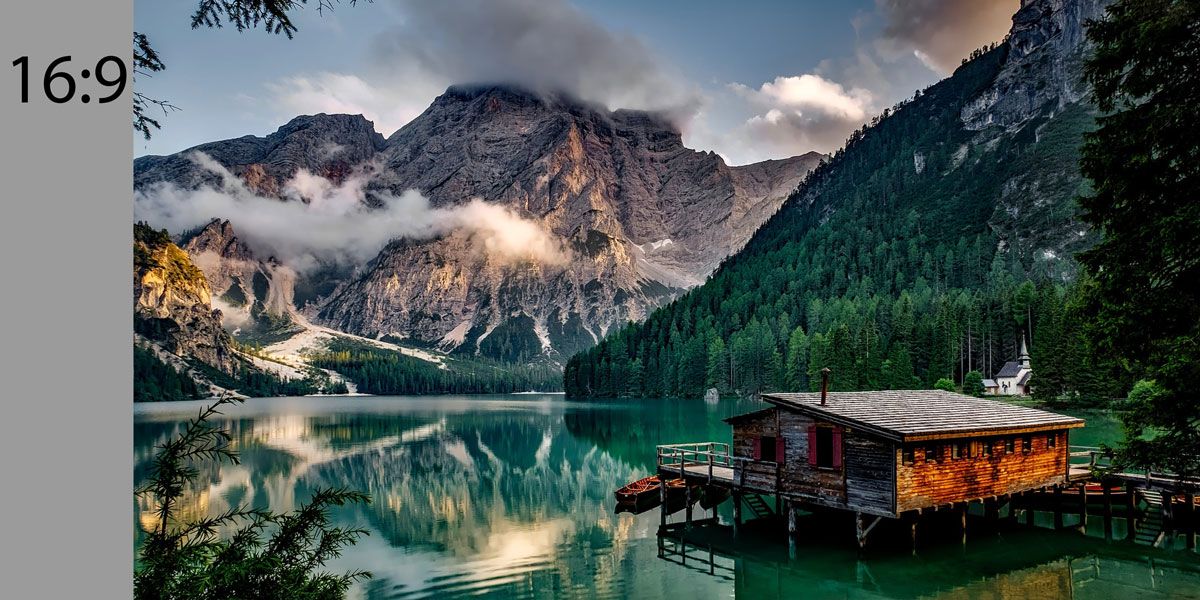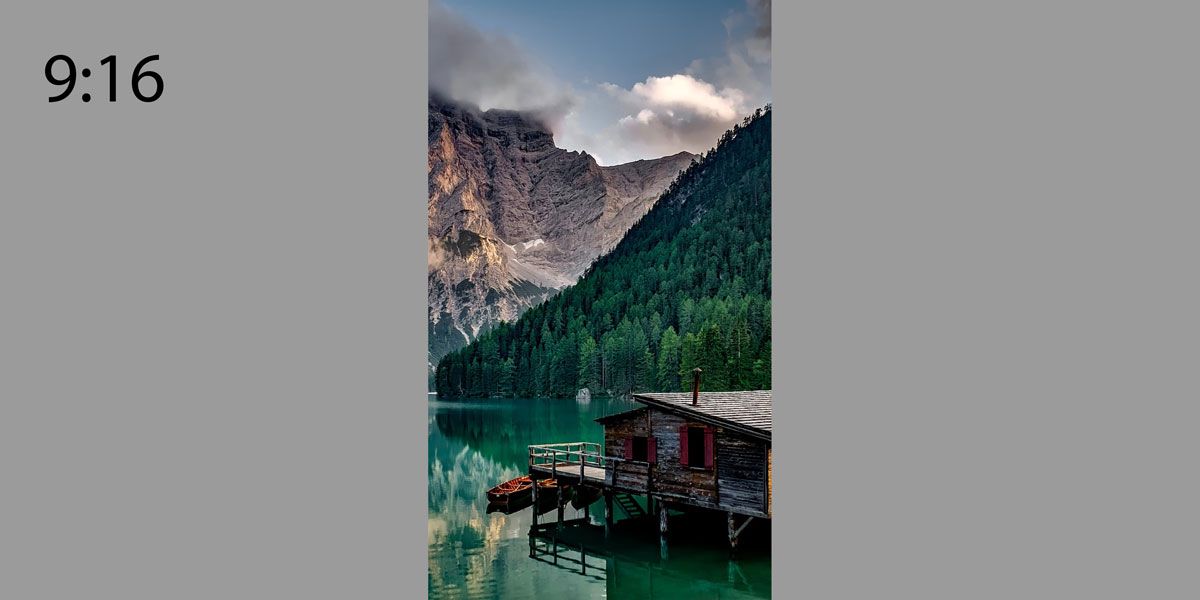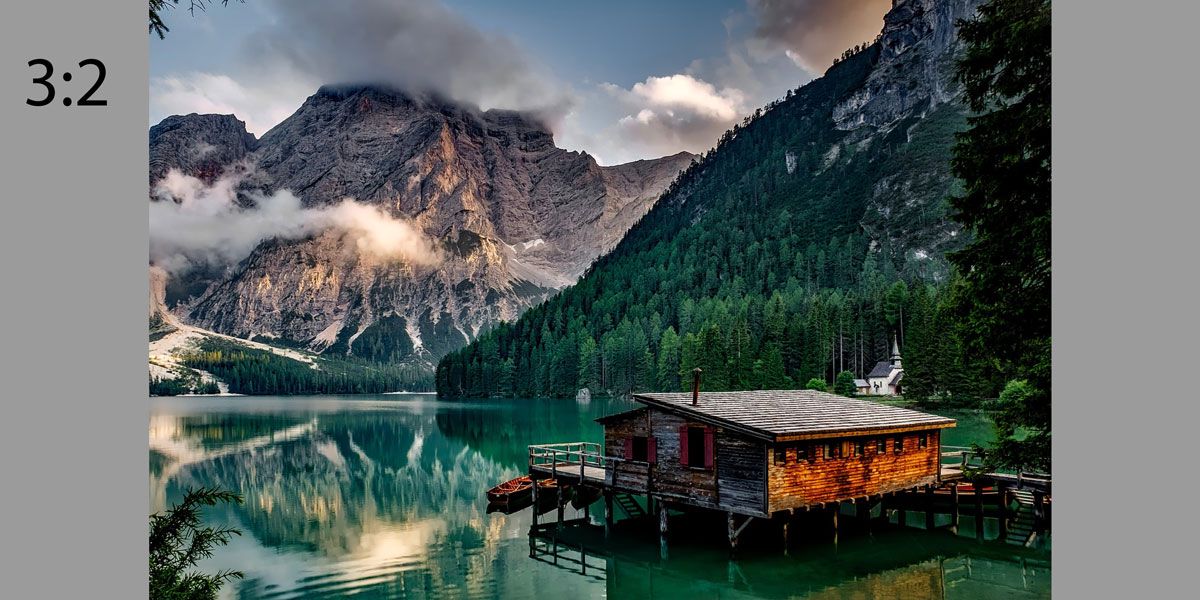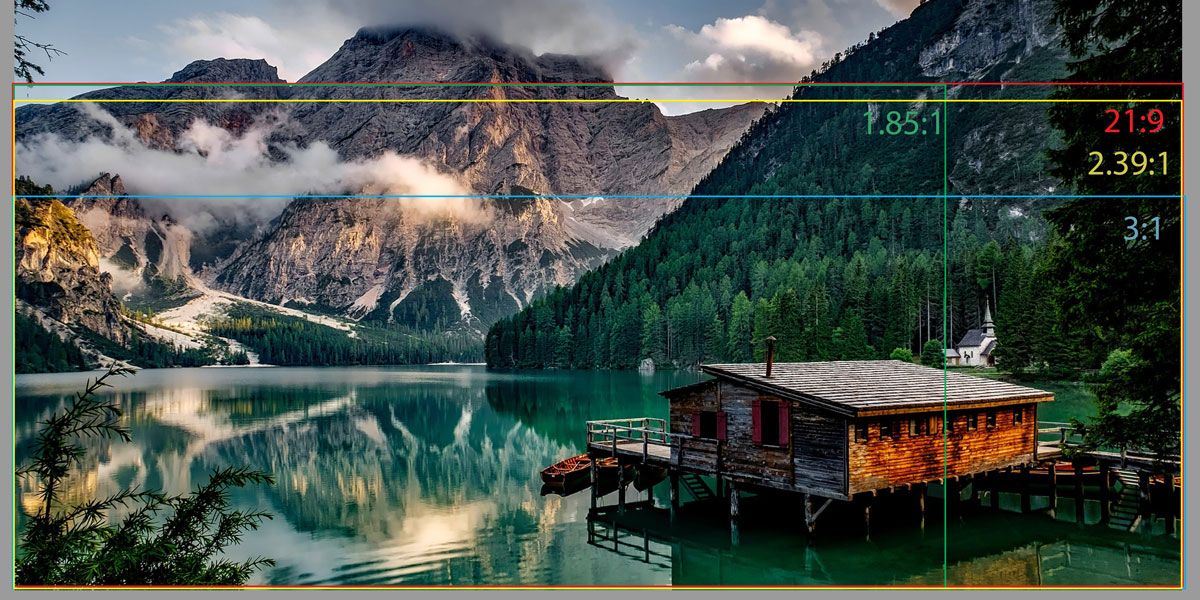As a viewer, you may not always notice the difference in aspect ratios. However, as a content creator, it's crucial to understand aspect ratios to produce high-quality video content. In this article, you will learn about aspect ratios in videos. We'll explore some of the most popular aspect ratios used today and which ones to use in your projects.
What Is Aspect Ratio in Video?
The aspect ratio in a video refers to the proportional relationship between the width and height of a video frame. You express it as two numbers separated by a colon, such as 4:3 or 16:9.
The first number represents the width, while the second number represents the height of the frame. For instance, a video with an aspect ratio of 16:9 has a width that is 16 units long for every 9 units of height.
The Difference Between Aspect Ratio and Resolution in Video
While you may confuse aspect ratio with the resolution, they are two different concepts. Aspect ratio refers to the proportional relationship between width and height, while resolution refers to the number of pixels that make up the video frame.
You typically express resolution as the total number of pixels in a video frame, such as 1920 x 1080 or 3840 x 2160. To learn more, see our detailed guide on the difference between aspect ratio and resolution.
Popular Aspect Ratios Used in Video
Now, let's take a closer look at some of the most popular aspect ratios used in videos.
4:3
The 4:3 aspect ratio is a nearly square aspect ratio commonly used in early television broadcasts and video production. It provides a boxy frame that is a bit wider than it is tall, with a width-to-height ratio of 4:3. The 4:3 aspect ratio served as the standard for television broadcasts for many years until the advent of high-definition television (HDTV) and widescreen aspect ratios.
One advantage of the 4:3 aspect ratio is that it can provide a classic, nostalgic, or retro feel to a video. This can be useful for content meant to evoke a sense of the past or viewed in a nostalgic context. Additionally, the 4:3 aspect ratio can be a useful tool for filmmakers to create a specific aesthetic or visual style.
1:1
The 1:1 aspect ratio is a square format that is commonly used on social media platforms such as Instagram and Facebook for both photos and videos. This aspect ratio provides a balanced square frame that can be useful for creating visually striking and engaging content. If Instagram is your primary platform for sharing videos, here's how to know what size your posts should be.
The 1:1 aspect ratio is often used in marketing and advertising as it allows businesses to showcase their products or services in a visually appealing way that stands out in a cluttered social media feed. Additionally, the 1:1 aspect ratio can help create a sense of symmetry and balance in the frame, which can be particularly useful for product shots or close-up portraits.
16:9
The 16:9 aspect ratio is a widescreen format that has become the standard for modern video production, particularly for high-definition and digital video. This aspect ratio provides a wide frame suitable for a range of content, from movies and TV shows to online videos and social media content you watch on YouTube and Vimeo.
One of the key advantages of the 16:9 aspect ratio is that it closely matches the aspect ratio of most modern displays, including computer monitors, televisions, and mobile devices. This means that content produced in 16:9 is more likely to be viewed in its original aspect ratio without any letterboxing or cropping that can negatively impact the visual quality of the video.
The 16:9 aspect ratio is also a versatile format that can be used for a wide range of content, from narrative fiction to documentaries, corporate videos, and more. Additionally, it allows for a greater field of view, which can be particularly useful for capturing wide landscapes, group shots, and action scenes.
9:16
The 9:16 aspect ratio is a vertical video format that has become increasingly popular with the rise of mobile devices and social media platforms. This aspect ratio provides a tall and narrow frame that is ideal for viewing on mobile devices held vertically.
One of the key advantages of the 9:16 aspect ratio is that it allows for a more immersive and engaging viewing experience on mobile devices. This is because it takes advantage of the natural way that people hold their phones; with one hand holding the device in a vertical position. This format is particularly popular for social media platforms such as Instagram and TikTok, which are designed for mobile-first viewing and emphasize short, visually engaging content.
The 9:16 aspect ratio is also useful for capturing certain types of content, such as portraits, close-ups, and other vertically oriented shots. It can be particularly useful for capturing human faces as it allows for a larger frame that emphasizes the person's features and expressions.
3:2
In video production, the 3:2 aspect ratio is less common but can still be used for certain types of content, such as documentaries or artistic films. This aspect ratio can provide a unique aesthetic that sets it apart from more commonly used aspect ratios. For example, the 3:2 aspect ratio can create a more cinematic feel that is closer to the 35mm film format.
It's worth noting that the 3:2 aspect ratio is not commonly supported by most video-sharing platforms, which means that videos in this aspect ratio may need to be letterboxed or pillarboxed to be displayed correctly on some devices or platforms.
Other Aspect Ratios in Video
In addition to the commonly used aspect ratios in videos discussed above, there are several other options that you may encounter less frequently. Here are a few examples...
2.39:1 or 2.35:1
This is a widescreen aspect ratio that is often utilized in feature films, especially those filmed with anamorphic lenses. It provides an even wider frame than the 16:9 aspect ratio, which can convey a greater sense of scope and grandeur.
3:1
This is an ultra-wide aspect ratio that is commonly used for panoramic shots and other types of landscape photography and videography. It provides an extremely broad frame that can capture a vast field of view, but may not be ideal for all types of content.
1.85:1
This is a widescreen aspect ratio that is commonly used in feature films and TV shows, providing a slightly wider frame than 16:9. It is frequently employed for dramas, comedies, and other narrative content.
21:9
The 21:9 aspect ratio, also known as ultra-wide, is a video aspect ratio that has gained popularity in recent years. It provides a wider and more immersive viewing experience for viewers, especially when it comes to cinematic content. This aspect ratio is commonly used in movie theaters and is slowly making its way into the mainstream consumer market.
Use the Best Aspect Ratio for Your Videos
Understanding aspect ratios is crucial for content creators to produce high-quality videos.Each aspect ratio has its own unique advantages and is suitable for specific types of content. For instance, the 16:9 aspect ratio is the standard for modern video production, while the 9:16 aspect ratio is popular for mobile devices and social media platforms.
Therefore, you should always consider the platform you are targeting before taking the shots and deciding on the perfect aspect ratio for your videos.

